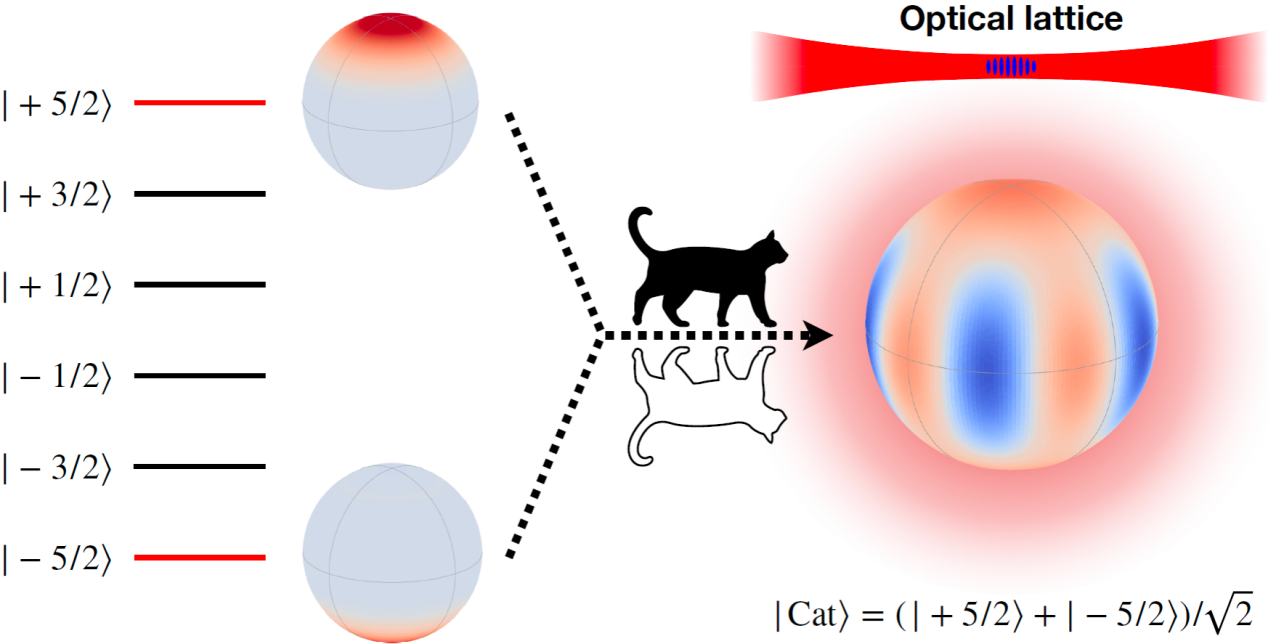A team led by Prof. LU Zhengtian and Researcher XIA Tian from the University of Science and Technology of China (USTC) realized Schrödinger-cat state with minute-scale lifetime using optically trapped cold atoms, significantly enhancing the sensitivity of quantum metrology measurement. The study was published in Nature Photonics.
In quantum metrology, particle spin not only serves as a potent probe for measuring magnetic fields, inertia, and a variety of physical phenomena, but also holds potential for exploring new physics beyond the Standard Model. High-spin Schrödinger-cat state, a superposition of two oppositely directed and furthest-apart spin states, offers significant advantages for spin measurements. On one hand, the high spin quantum number amplifies the precession frequency signal. On the other hand, the cat states are insensitive to some environmental interference, thus suppressing measurement noise. However, one major technical challenge in applying cat states in experiments is how to maintain a sufficiently long coherence time.

The spins of 173Yb atoms form a Schrödinger-cat state within a one-dimensional optical lattice. (Image by YANG Yang et al.)
To address this challenge, the research team first trapped 173Yb atoms with a spin of 5/2 in an optical lattice. By controlling laser pulses to induce nonlinear light shifts on the ground states of the atoms, they successfully prepare a superposition state consisting of two spin projections, +5/2 and -5/2. This state, namely the Schrödinger-cat state, exhibits enhanced magnetic field sensitivity and experiences identical light shifts in the optical lattice, residing within a decoherence-free subspace. Therefore, it is immune to intensity noise and spatial variations of the lattice.
Experimental results indicated that the coherence time of this cat state exceeded 20 minutes. Utilizing Ramsey interferometry, the researchers confirmed that the phase measurement sensitivity approached the Heisenberg limit.
This long-lived Schrödinger-cat state paves a new way for atomic magnetometry, quantum computations, and the exploration of new physics beyond the Standard Model.
Paperlink: https://www.nature.com/articles/s41566-024-01555-3
(Written by CAI Guoyuan, edited by ZHANG Yihang, USTC News Center)